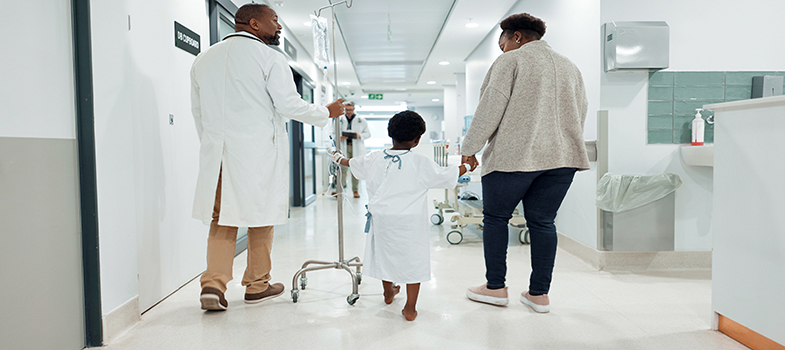9.3 Equity in national action plans
There needs to be a gender and equity focus in all efforts to protect and improve population health, as acknowledged in global mandates such as the UN Sustainable Development Goals (UN, n.d. 1) and the UN Women Strategic Plan 2022–2025 (UN, n.d. 2).
Containing and controlling AMR demands coordinated, international action across a broad range of sectors. Within individual countries, governments will need to work with multiple stakeholders, across diverse sectors and disciplines, to tackle AMR. At the very minimum, that means multisectoral collaboration across health and agriculture. More often, it also means coordinating action with departments of trade, finance and the environment, among others. Deliberate coordination and collaboration between key stakeholder groups, such as government, civil society and the private sector, is also needed.
A 2024 WHO review of 145 NAPs for AMR found that 125 of 145 publicly available NAPs did not include mentions of sex or gender. Policy and interventions that do not address inequities risk exacerbating equity challenges (WHO, 2020). NAPs are an important entry point to consider and strengthen the gender and equity responsiveness of national efforts to tackle AMR.
Figure 9 illustrates how addressing equity in AMR NAPs can lead to reduction in mortality and morbidity due to drug-resistant infections.

Examples of good practice come from Uganda and Malawi’s NAPs, both of which mainstream gender considerations.
Mainstreaming gender considerations in Uganda’s NAP
GEAR up is a global consortium that seeks to catalyse action on gender and equity in AMR through supporting Fleming Fund country grantees to mainstream gender and equity within routine AMR systems and structures. GEAR up supported the mainstreaming of Uganda’s 2024–2028 NAP. Key steps in the process were:
- Supporting capacity on gender, equity and intersectionality through a participatory workshop with key stakeholders:
- Participants explored how social determinants intersect to influence susceptibility to drug-resistant infections, health-seeking behaviours and antimicrobial consumption. This underscored the need for AMR surveillance to evolve beyond a focus on ‘bugs and drugs’ toward equitable practices grounded in effective governance, multisectoral collaboration and evidence-based strategies.
- The workshop introduced participants to the concept of intersectionality, providing insights into how overlapping factors shape vulnerabilities to AMR risks. By recognising the varied risks faced by different populations, this approach ensures that AMR interventions do not inadvertently create inequities. Participants discussed practical applications, paving the way for solutions that promote gender equality and address social determinants in AMR strategies.
- A collaborative review process to strengthen Uganda’s AMR Action Plans and surveillance tools:
- Stakeholders examined key national documents and identified gaps and proposed actionable recommendations to enhance inclusivity and responsiveness, including the need for data disaggregated beyond sex and age, and incorporating variables such as education level, marital status and disability.
- Fostering a collaboration for inclusive AMR programming:
- Discussions emphasised the importance of multisectoral partnerships among the Ministry of Health, private sector actors and implementing partners to ensure sustained, inclusive AMR programming. These collaborations aim to create shared accountability and collective action in addressing AMR challenges across sectors.
- Drafting a framework for gender and equity integration:
- The development of a draft terms of reference for a gender and equity focal team to serve a guiding body to ensure that gender and equity considerations are systematically integrated into Uganda’s AMR programming. This reflects a long-term commitment to inclusivity and sustainability.
You can read more about this process in the full GEAR up blog (GEAR up, 2024b).
Now complete Activity 9 to consider the NAP for AMR in your country.
Activity 9: Equity in NAPs
Find your country’s NAP for AMR in the WHO library of AMR NAPs.
If a NAP for your country is not available, select one for a country of interest. To get the most out of this activity we suggest that you select a NAP for a country that is in a similar region to your own.
Using the situational analysis in the NAP, identify whether:
- any differences between males and females are discussed
- any vulnerable groups are discussed
- any information is available for differences between other groups – for example, age groups, geographical locations, educational levels, occupations or workplace settings.
Discussion
Depending on where you live and which NAP you looked at, you may have seen that the situational analysis in your NAP included data on the differences between groups. If you did not find any data on differences between groups does the NAP include any plans to collect disaggregated data? Or do you know when the NAP is due for renewal?
Many NAPs are still ‘gender-blind’ in that they do not distinguish between men and women; however, progress is being made towards more gender-sensitive NAPs. If you want to see an example of a gender mainstreamed NAP you should look at Malawi’s or Uganda’s.
Now you will move on to reflect on how you can take your learning from this course in your work for positive action.
9.2 The importance of community engagement in intervention design




